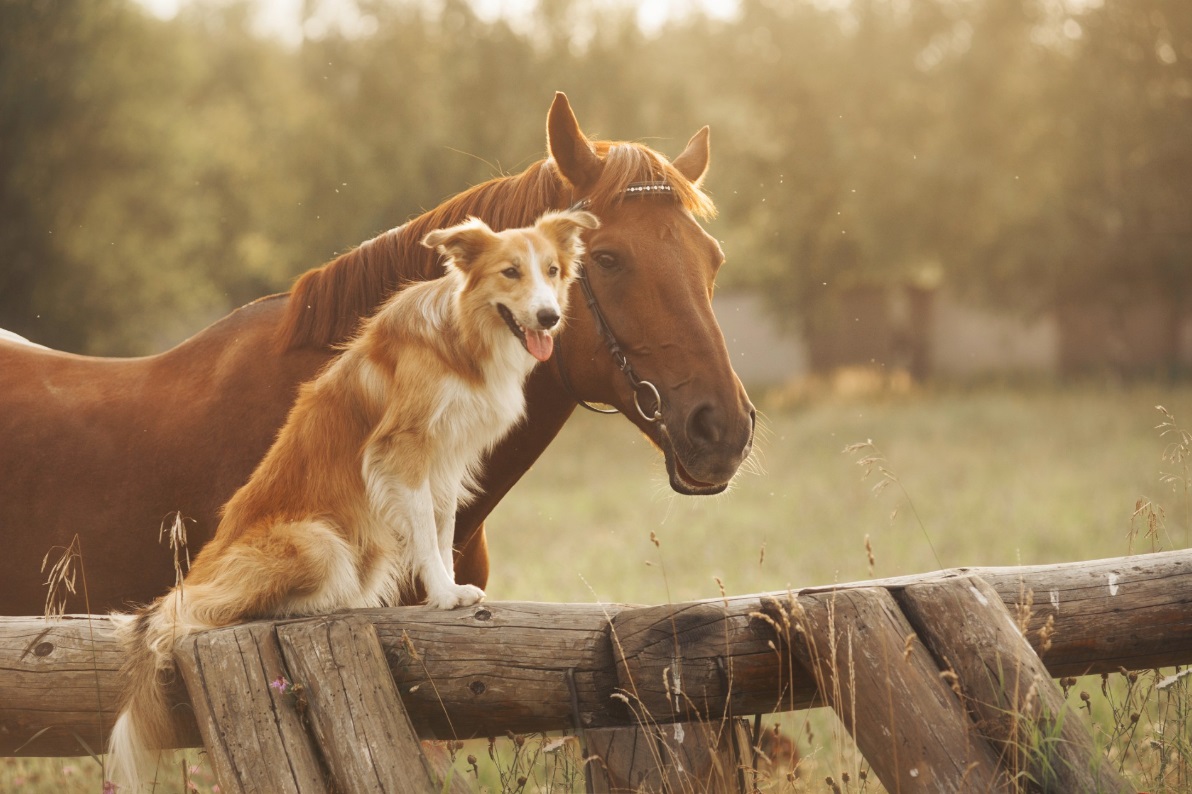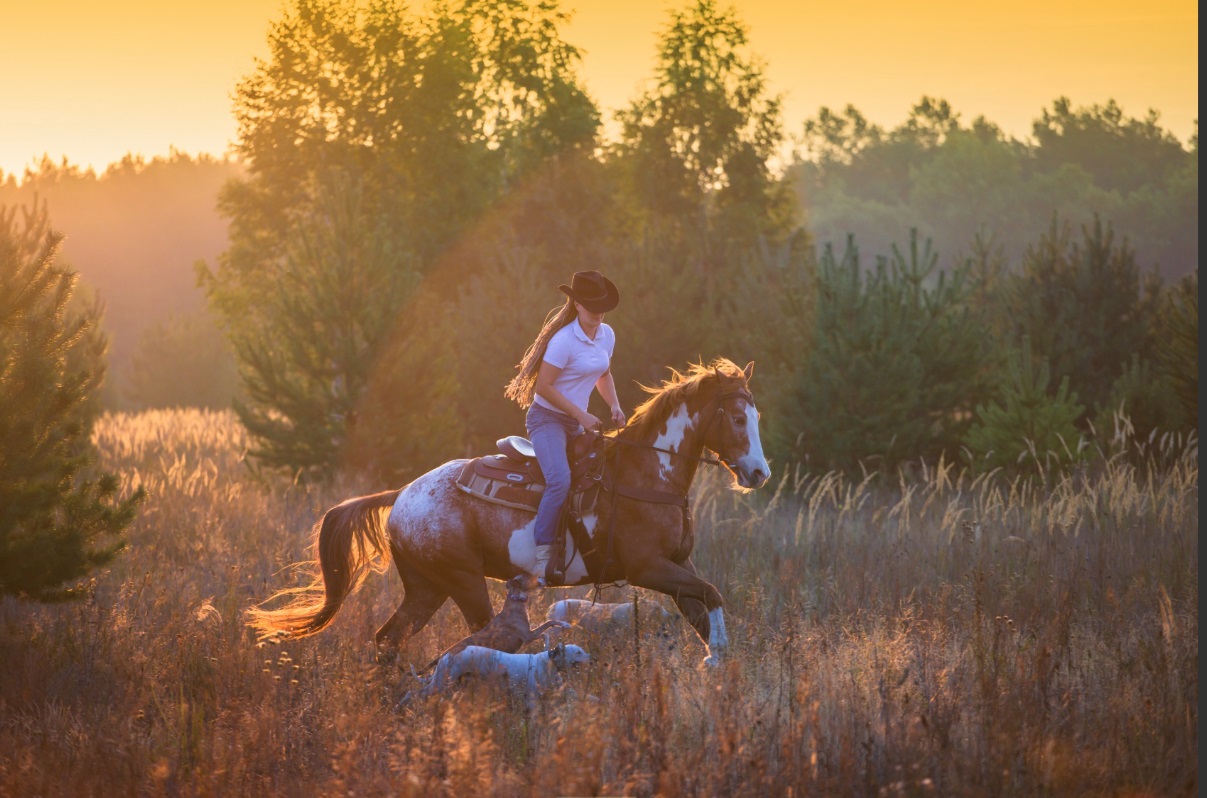Combining the company of horses and dogs can be immensely satisfying, yet it’s sometimes a tricky venture. You might dream of seamless camaraderie between your pets, but achieving that takes a thoughtful approach, plenty of patience, and a deep dive into the unique needs and behaviours of each species. Creating a welcoming and secure space is crucial for nurturing a friendly bond between your horse and dog.
This guide offers practical steps to help horse owners like you achieve a peaceful coexistence between your horses and dogs. You’ll learn how to leverage their natural instincts, apply effective training, and maintain vigilant supervision, all to cultivate a harmonious atmosphere at your stable.

1. Understanding Their Natural Instincts
Before introducing your horses and dogs, it’s crucial to understand their natural instincts. Horses, being prey animals, are naturally wary and can startle easily due to abrupt movements or loud sounds. Conversely, dogs are hunters at heart, often driven by a compulsion to chase, particularly if something small or fast-moving catches their eye.
Acknowledging these differences prepares you for possible challenges. A horse might see an unfamiliar canine as a threat, reacting defensively. On the flip side, a dog’s playful advances might be perceived as menacing by a horse.
Start by introducing them in a controlled setting, using leashes and halters to manage their initial interactions from a safe distance. Gradually lessen this gap while keeping a close eye on their behaviour. Consulting with an online dog trainer could provide tailored advice to ensure your pet dog behaves safely around horses.
2. Creating A Safe Environment
Creating a safe environment is a vital step in ensuring your horses and dogs get along. Begin by establishing secure zones where both horses and dogs can feel at ease. Your barriers—fences and gates—should be robust and tall enough to deter dogs from leaping over and horses from breaking through.
Designate retreat spaces for each animal to withdraw to when they feel the need for a break. Dog owners should remember that dogs, in particular, might appreciate a calm area away from the horses to decompress. Similarly, provide horses with a sanctuary free from disturbances.
Regularly check your stable and its surroundings for potential risks like loose wires or damaged fencing. A well-maintained space helps prevent mishaps and keeps stress levels low for both your pets.

3. Training And Obedience
Training plays a significant role in fostering a harmonious relationship between your horses and dogs. Basic obedience training for your dog is essential before introducing them to the stable environment, especially if it’s your first horse. Commands such as ‘sit,’ ‘stay,’ and ‘leave it’ can help manage your dog’s behaviour around horses.
Consistent training sessions can build a foundation of good manners and respect. Training your dog to remain calm and controlled in the presence of horses will minimise the risk of accidents. Reward-based dog training methods are particularly effective, reinforcing positive animal behavior with treats and praise.
For the safety of both animals, it’s important to train your dog not to chase or bark at horses. Such behaviour can startle horses, leading to dangerous situations. Engaging a professional trainer or utilising online resources can provide structured guidance tailored to your dog’s needs.
4. Supervised Interaction
Supervised interaction is key to ensuring your horses and dogs develop a positive relationship. Initially, all interactions should be closely monitored, with both animals on leashes or halters to prevent any sudden movements or aggressive animal behavior.
Getting the animals familiar with one another can be beneficial before direct interaction. Being in close proximity whilst they are being groomed, trained or given attention can help your dog and equine gain trust in the presence of each other.
Begin with short, controlled meetings, gradually increasing the duration as both animals become more comfortable. Watch for signs of stress or discomfort, such as pinned ears in horses or raised hackles in dogs. If either animal shows signs of distress, calmly separate them and try again later.
Over time, as trust builds, you can allow more freedom during interactions. However, supervision remains crucial, especially in the early stages. Regular, positive interactions will help your horses and dogs become more accustomed to each other, reducing the likelihood of conflicts.
5. Building A Routine
Establishing a routine can help your horses and dogs adjust to each other’s presence. Consistent daily schedules, including feeding, exercise, and training times, can create a sense of stability and predictability for both animals.
Include joint activities in your routine, such as walking your dog alongside your horse or allowing them to share supervised playtime in a secure area. These shared experiences can strengthen their bond and promote a sense of companionship.
It’s important to remain patient and flexible, as building a routine that works for both your horses and dogs may take time. Adapt your approach based on their individual needs and responses, always prioritising their safety and well-being.
Final Words
Building a harmonious relationship between your horses and dogs involves understanding their instincts, establishing a secure environment, providing consistent dog and horse training, supervising their interactions, and creating a stable routine. With the right approach and ongoing dedication, your pets can enjoy a peaceful, enjoyable coexistence. Remember, persistence and patience are your best tools in this journey.
